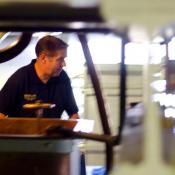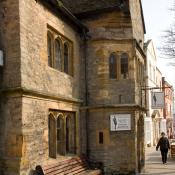The local history of Lyme Regis represented by maritime and domestic objects, and illustrated by painting, prints and photographs.
The Lyme Regis Philpot Museum used to be called the Philpot Museum before being renamed the Lyme Regis Museum.
The building was comissioned in 1901 by Thomas Philpot, a relative of the famous fossil collector, Elizabeth Philpot. The idiosyncratic building was designed by George Vialls, who also designed the nearby Guildhall. Standing on the birthplace of local fossil hunter Mary Anning, the museum is one of Lyme Regis' architectural gems. Ammonites set into the pavement outside in an ornate example of Coadestone work reflect both the local history and paleontology for which Lyme Regis is famous. Coadestone is a ceramic material invented by Eleanor Coade, who was local to the area, while Lyme Regis is in the very heart of the Jurassic Coast, whose impressive fossils have earned it the status of a world heritage site.
The Lyme Regis Musuem features truly spectacular fossils collected in the area and dating from the Jurassic period. It also contains artefacts documenting local maritime history and memorabilia relating to writers who had links with the town, such as Jane Austen and John Fowles. In the centre of the building is a huge stairwell with a beautiful spiral staircase.
Exhibits of note include a large display centred on the sinking of the HMS Formidable in thirty foot waves off the coast of Devon in 1915, a historic fire engine complete with pumps, a landslip gallery telling the story of the great landslip in 1839 and a superb carved bedhead from a bed slept in by the Duke of Monmouth.
Fossil walks with the Museum's geologist, Paddy Howe, are also available.




